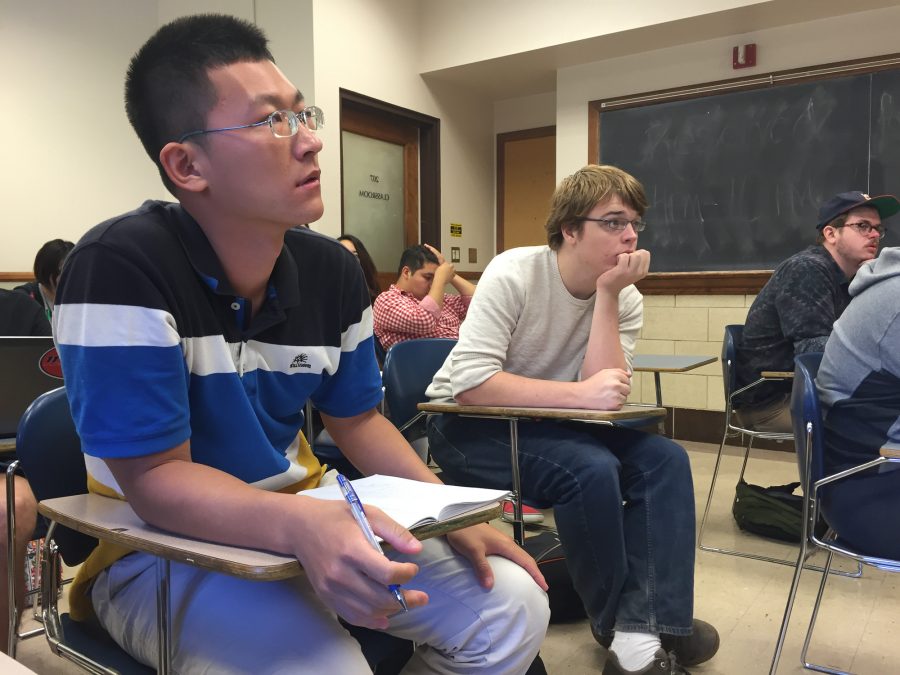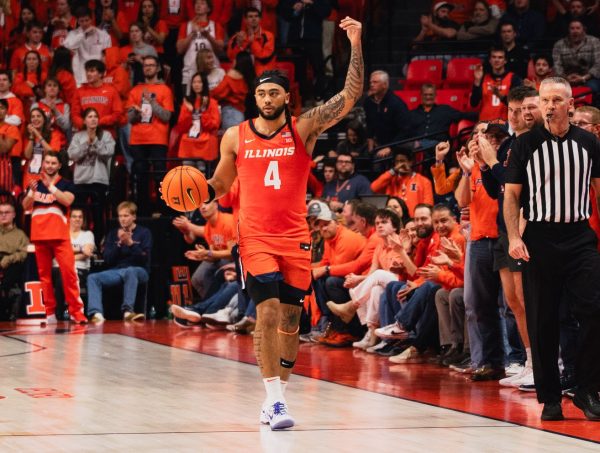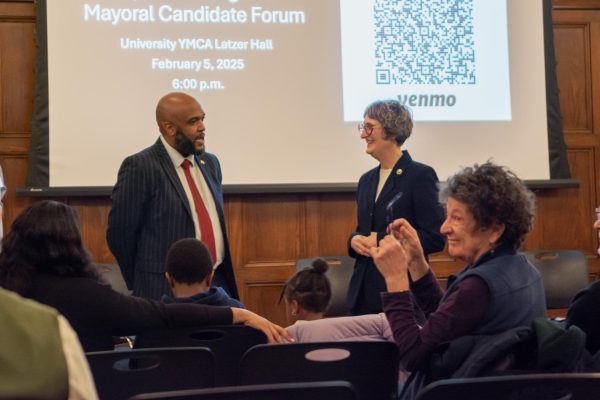Professors balance American student, Chinese student needs
Photo Courtesy of Angelica LaVito
Zeyu Hu, a senior in LAS, listens to history professor Poshek Fu lecture in his Social-Economic History of Modern China class. Fu has changed this course and two others to accommodate international students like Hu, who is from Beijing.
October 5, 2016
Poshek Fu presented material to his Social-Economic History of Modern China class like any other lecture. But unlike some other classes, students raised their hands and told their own stories related to the professor’s presentation.
This has become the new norm for Fu.
He used to teach primarily students from the Chicago suburbs who hardly knew anything about China. But as the number of international students from China at the University has increased, the number of Chinese students who registered for his classes increased as well.
American students used to dominate Fu’s classes, with a handful of them being Asian-American, he said. Now, almost two thirds of the students in his classes are from China and Korea. In response, he and other professors have restructured their classes to accommodate international students.
“If we accept so many students from Asia,” Fu said, “we also should give them something new instead of just having them come into class then say, ‘bye, bye.'”
Get The Daily Illini in your inbox!
Fu teaches East Asian Civilization, Modern China and Social-Economic History of Modern China. He struggled at first because he did not want to make his classes too hard for American students, but he also did not want to make the class too easy for Chinese students. Instead of teaching basic information about the region, he tries to focus on larger themes.
And instead of simply lecturing, Fu has added more movies. He facilitates discussions among students and purposely groups them with people of different backgrounds so they can learn from each other.
“When we discuss the movies, then the Chinese students have a lot of things to share that is sometimes a different perspective than the local students,” Fu said. “I find that movies are a very good way to get them to talk. They all have opinions.”
Roderick Wilson, a history, global studies and East Asian languages and cultures professor, has added more Chinese, Japanese and Korean language to lecture slides in his East Asian history classes to help native speakers quickly identify the issues he addresses. He asks Chinese and Korean students what they learned about historical events or people in their home countries to highlight differing views of history and how they emerge.
Zeyu Hu, a senior in LAS and a student in Fu’s Modern China and Social-Economic History of Modern China, learned about Chinese history throughout his schooling in Beijing. He said the textbooks are biased and praise communism for denouncing Western powers that bully China.
So although Hu has already learned about the country’s history, here he learns it from a different perspective and can discuss it with people from different backgrounds in class.
“When you come together to discuss something, it’s interesting to hear different perspectives and different backgrounds to discuss certain issues,” he said.
Jackson Turner, a senior in LAS and a student in Fu’s Modern China and Social-Economic History of Modern China, enjoys hearing his classmates’ experiences. He said it gives the class “flavor” and it has provided him with a chance to learn about international students and life in their native countries.
“It’s sort of hard to talk about this stuff outside of a class like this,” he said. “You either have to be good friends or be very open and willing to talk with random strangers. The class kind of facilitates conversations between American students and Chinese students.”
And that is Fu’s goal. The influx of Chinese and Korean students has forced him to rethink how he teaches his classes, but he sees it as an improvement since American students can learn from the international students and vice versa.
He just has to start the conversation.







